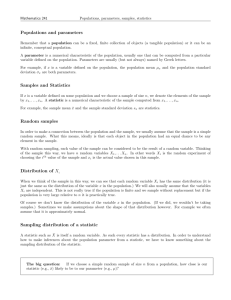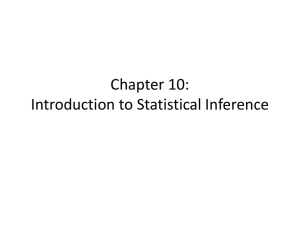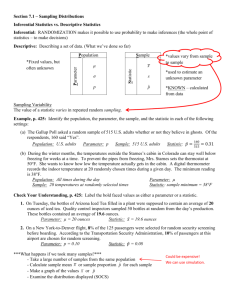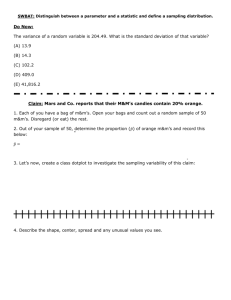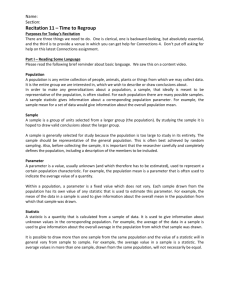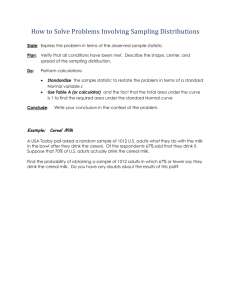Sampling Distributions - Greenwood High School
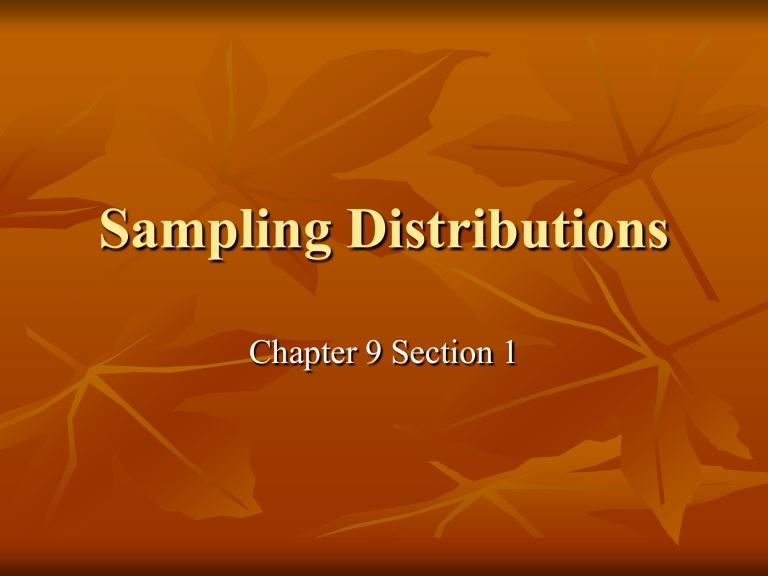
Sampling Distributions
Chapter 9 Section 1
The Idea of Statistical Inference
“How often would this method give the correct answer if I used it very many times?”
With a partner…
Do Activity 9A on page 562
Parameter vs. Statistic
Parameter vs. Statistic
µ x
µ vs. x
Parameter or Statistic?
The Tennessee STAR experiment randomly assigned children to regular or small classes during their first four years of school. When these children reached high school, 40.2% of blacks from small classes took the ACT or
SAT college entrance exams. Only 31.7% of blacks from regular classes took one of these exams.
Answer: Both p = 40.2% and p = 31.7% are statistics.
Parameter or Statistic?
A random sample of female college students has a mean height of 64.5 inches, which is greater than the 63-inch mean height of all adult American women.
Answer: The sample statistic mean x = 64.5 inches is a statistic, and the population mean µ = 63 inches is a parameter.
p vs. p
Population proportion: p
Sample proportion: p (p-hat)
Used to estimate the population proportion p
Note: Typically,
*English letters are used for statistics (x, s, r, etc.)
*Greek letters are used for population (µ, σ, α, β)
Sampling Variability
The value of a statistic varies in repeated random sampling
When we take many samples, this no longer is an issue
What if we can’t take every possible sample?
Note: A simulated sampling distribution is not the same as the actual sampling distribution.
The Bias of a Statistic
In other words, there is no systematic tendency to overestimate or
Underestimate the parameter.
Two Unbiased Sampling
Distributions
Bull’s Eye Try #1
Bull’s Eye Try #2
Bull’s Eye Try #3
Bull’s Eye Try #4

